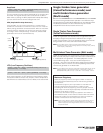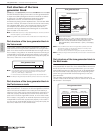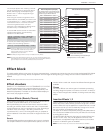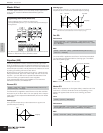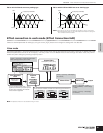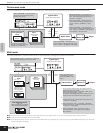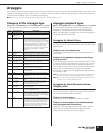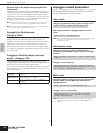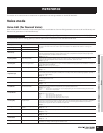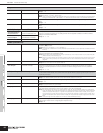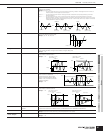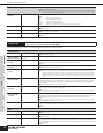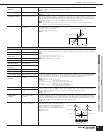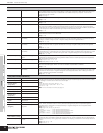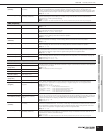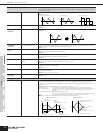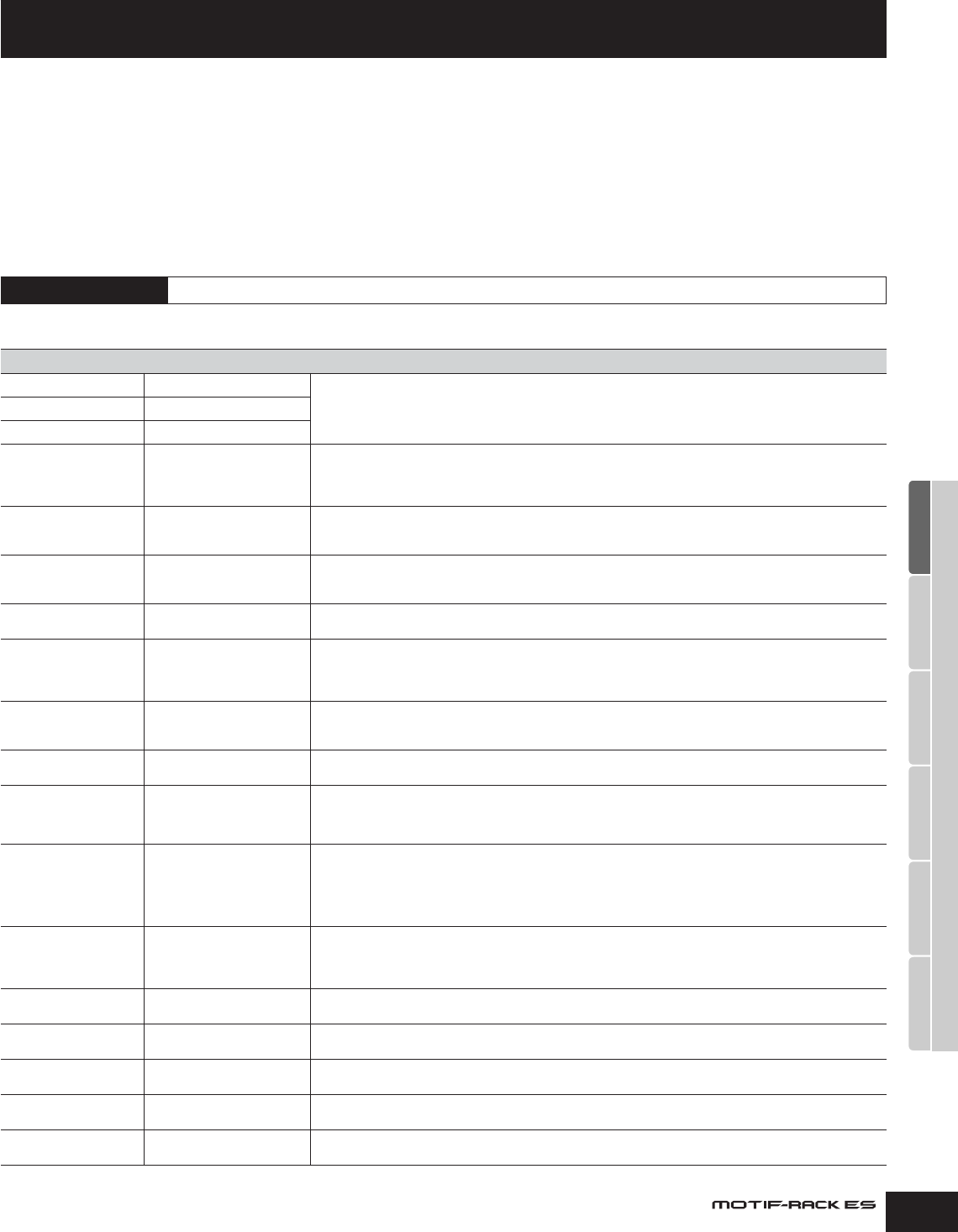
Owner’s Manual
65
Utility
Voice mode
Performance modeMulti modeEffectArpeggio
Reference
This section of the manual covers in detail all of the parameters and settings available on the MOTIF-RACK ES.
Voice mode
Voice Edit (for Normal Voice)
When a Normal Voice is selected, the Voice Edit parameters are divided into Common Edit (parameters common to all four Elements), and
Element Edit (parameters of individual Elements).
These parameters are for making global (or common) edits to all four Elements of the selected Normal Voice.
Reference
Common Edit
[VOICE] → select Normal Voice → [EDIT] → [SHIFT]+[COMMON] → select each display with PAGE [E][F]
General
Category
Category From this display you can assign the category (sub and main) of the selected Voice, and create a name for
the Voice. The Voice name can contain up to 10 characters. For detailed instructions on naming, see
page 50.
SubCategory
Sub Category
Name
Name
Mono/Poly
Mono/Poly Selects whether the Voice is played monophonically (only one note at a time) or polyphonically (multiple
notes sounding simultaneously). Select whether each Part is played back monophonically (single notes
only) or polyphonically (multiple simultaneous notes).
Settings:mono, poly
KeyAsgnMode
Key Assign Mode Selects single or multi Key Assign. When this is set to “single,” double playback of the same note is
prevented. To allow playback of each instance of the same note, set this to “multi.”
Settings:single, multi
M.TuningNo.
Micro Tuning Number Determines the tuning system for the Voice. Thirteen additional tuning systems are available for a variety of
tuning applications and effects.
Settings:See the Micro Tuning List on page 77.
M.TunRoot
Micro Tuning Root Determines the root note of the Micro Tuning set above.
Settings:C ~ B
MEQ Low/LowMid/
HighMid/High
Master EQ Offset Adjusts the master (global) EQ settings for the entire Voice. The settings made here are applied as offsets to
the EQ settings (with the exception of “MID”) from the Utility mode, with the following operation: [VOICE] →
[UTILITY] → MEQ display.
Settings:-64 ~ +63
PortaSwitch
Portamento Switch Turns the Portamento function on or off. Portamento is used to create a smooth transition in pitch from the
first note played to the next.
Settings:off, on
PortaTime
Portamento Time Determines the pitch transition time. Higher values result in a longer pitch change time.
Settings:0 ~ 127
PortaMode
Portamento Mode Determines how the Portamento is applied to your keyboard performance.
Settings:fingered, fulltime
fingered...........Portamento is only applied when you play legato (playing the next note before releasing the previous one).
fulltime.............Portamento is always applied.
PortaT.Mode
Portamento Time Mode This determines how the Time parameter above affects the Portamento effect.
Settings:rate1, time1, rate2, time2
rate1................Pitch changes at the specified rate.
time1................Pitch changes in the specified time.
rate2................Pitch changes at the specified rate within a octave.
time2................Pitch changes in the specified time within a octave.
PortaLgtSlp
Legato Slope Determines the speed of the attack of legato notes, when Portamento Switch above is set to on and Mono/
Poly is set to mono. (Legato notes “overlap” each other, the next being played before the previous is
released.) The higher the value, the slower the attack rate.
Settings:0 ~ 7
PB Upper/Lower
Pitch Bend Range Upper/
Lower
These two parameters determine the pitch change range of the Pitch Bend wheel.
Settings:-48 ~ +24
A.PhraseNo.
Audition Phrase Number Selects the type of the Audition phrase.
Settings:000 ~ 285
A.PhrNtSft
Audition Phrase Note Shift Adjusts the pitch in semitone increments.
Settings:-24 ~ +24
A.PhrVelSft
Audition Phrase Velocity Shift Selects the velocity of the Audition phrase.
Settings:-64 ~ +63
AssignA/B/1/2
Assign A/B/1/2 This parameter offsets the value of each Dest (Destination) parameter. Please note that the certain
Destinations of Assign A/B change the absolute value.



